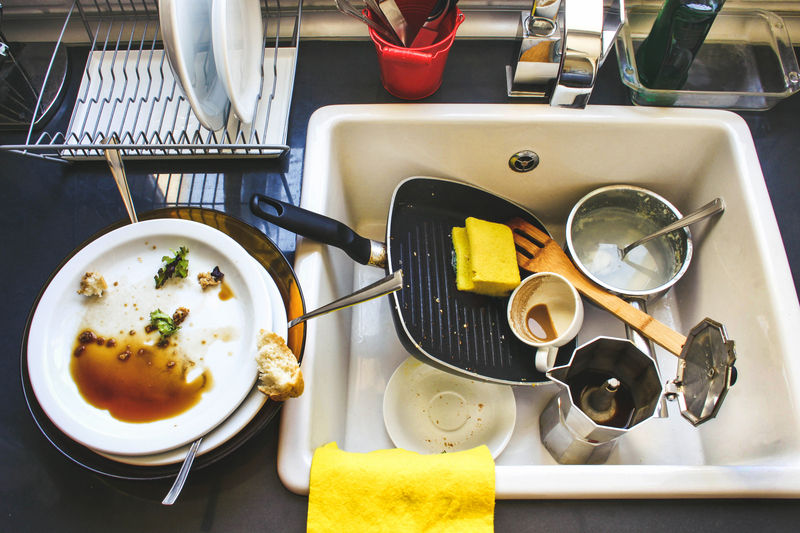Get Pro-Level Long-Term Sofa Storage Tips and Tricks
Are you planning to store your beloved sofa for an extended period? Whether you're relocating, renovating, downsizing, or simply making seasonal room transformations, properly storing your couch is crucial to preserve its condition and value. In this comprehensive guide, you'll discover expert long-term sofa storage tips and tricks that prevent damage, save money, and ensure your sofa stays pristine while in storage.
Why Are Proper Sofa Storage Techniques Vital?
Many underestimate the importance of long-term couch storage. Sofas are often some of our most cherished and expensive furniture pieces. Improper storage can lead to irreversible damage such as:
- Mold and mildew growth due to moisture buildup
- Pest infestation that can destroy upholstery and padding
- Fabric discoloration caused by sunlight or improper materials
- Structural warping from unsupported placement
- Unpleasant odors that linger even after retrieval
Taking the right approach to storing sofas long-term helps you avoid costly repairs or the need for premature replacement.

Before You Store: Smart Sofa Preparation Steps
1. Thoroughly Clean Your Sofa
Before any storage solution, deep-clean your sofa. Leftover crumbs, dirt, and body oils attract pests and can cause odors or stains to set permanently. Here's how to clean different sofa materials:
- Fabric Sofas: Vacuum crevices and cushions, use a fabric-safe cleaner, and follow manufacturer guidelines.
- Leather Sofas: Wipe with a damp cloth and apply a leather conditioner.
- Microfiber Sofas: Use a microfiber-specific cleaner and soft brush.
- Let your sofa fully air dry to prevent mildew before wrapping or moving.
2. Disassemble if Possible
Many modern couches and sectionals are designed for partial disassembly. Break down removable pieces such as legs, cushions, or arms to:
- Reduce risk of breakage during transport
- Make moving and storing more manageable
- Maximize storage space
Label all screws, bolts, and hardware for easy reassembly! Store these in a sealed bag taped to the underside of a sofa frame or inside a labeled box.
3. Protect and Wrap Your Sofa
One of the secrets to long-term couch storage is quality wrapping:
- Avoid plastic wrap directly against upholstery. It can trap moisture and promote mold. Instead, use breathable coverings like furniture blankets or heavy-duty cotton sheets for fabric sofas.
- For leather sofas, use padded covers to prevent scratches, and choose acid-free paper between the cover and leather surface if you're storing for over 6 months.
- Seal the wrap with packing tape but don't tape directly to the sofa to avoid residue.
- For added protection from dust and pests, consider finishing with a loose-fitting plastic cover--never airtight.
Choosing the Best Environment for Long-Term Couch Storage
1. Opt for Climate-Controlled Storage Facilities
Temperature and humidity swings are a sofa's worst enemies. A climate-controlled storage unit will:
- Maintain stable temperatures (ideally 55-75?F)
- Keep humidity levels below 50% to prevent mold, mildew, and wood warping
Never store sofas in damp basements, attics, garages, or sheds. These environments are prone to moisture, extreme temperatures, and pests--risking irreparable damage to your furniture.
2. Prepare the Storage Space
To ensure your couch stays in perfect condition during long-term storage, prepare your unit or room:
- Clean and let the storage area dry completely before placing your sofa inside.
- Use wooden pallets or plastic risers to elevate your sofa off the floor, which keeps it safe from flooding, spills, or condensation.
- Avoid leaning your sofa against walls. This allows for proper air circulation and keeps upholstery dry.
- Place furniture away from any vents or windows.
3. Use Pest Deterrents
Unwanted critters can wreak havoc on stored sofas. For pro-level protection:
- Scatter cedar blocks, silica gel packs, or pest-deterring sachets near (not on) the sofa.
- Avoid food-derived repellents that might attract instead of repel and leave stains.
- Check your storage area for entry points and seal any gaps or cracks.
How to Store a Sofa Long-Term: Expert Positioning & Handling Tips
1. Store Your Sofa Upright and Assembled
When possible, store sofas upright and properly assembled to:
- Preserve the frame integrity
- Minimize fabric creasing or sagging
- Ensure easy retrieval and reassembly
If floor space is limited, stack cushions vertically. However, never stack heavy boxes or items atop your sofa--the weight can deform cushioning and damage the frame.
2. Allow for Air Circulation
Proper airflow is one of the top strategies for preventing musty odors and mold growth.
- Leave a few inches of clearance around the sofa, especially near walls and other large items.
- Do not cover ventilation grilles in the storage unit.
- If storage will last over a year, periodically inspect and air out the space, or use moisture-absorbing packs (replace as needed).
3. Label, Photograph, and Record
For organized, stress-free long-term sofa storage:
- Label all stored sofa components if dismantled.
- Take photos of the sofa's condition and how it is wrapped/stored for your records and future claims.
- Keep assembly instructions and hardware together in a waterproof, labeled bag or folder nearby.
Sofa Storage Don'ts: Common Mistakes to Avoid
- Don't use colored newsprint or inked wraps--they can bleed onto upholstery and stain permanently.
- Don't store wet or damp sofas. Even minor moisture can trigger major mold outbreaks over time.
- Don't assume plastic alone is protective. It traps condensation and causes fabric to "sweat."
- Don't neglect insurance. Protect valuable sofas with a storage policy that covers water, fire, and theft damage.
Long-Term Couch Storage for Special Materials
Storing Leather Sofas
Leather requires special care in storage:
- Clean thoroughly and apply a leather conditioner before wrapping.
- Store in climate-controlled conditions out of direct sunlight--light can cause fading and cracking even with covers.
- Check every six months for dryness; reapply conditioner if necessary.
Storing Antique or Designer Sofas
- Hire professional furniture movers or preservationists for packing and storing high-value or delicate pieces.
- Request acid-free, museum-quality wraps or covers if storing for more than a year.
- Keep antique sofas off the ground and away from exterior walls--insulation from temperature variation is key.
Storing Sectional and Reclining Sofas
- Disassemble fully and wrap each piece.
- Secure recliner mechanisms in the closed position with padded ties--not tape.
- Label all connecting segments clearly for easier reassembly.
Bonus Pro-Level Sofa Storage Hacks
- Store pillows and fabric items in breathable bags separately to prevent compression and odor transference.
- Insert an open box of baking soda nearby to naturally absorb persistent odors.
- Add a fabric-safe, natural deterrent like dried lavender or cedar shavings for long-term freshness.
- Schedule periodic checks if access allows, especially after storms or seasonal weather changes.
Retrieving Your Sofa After Long-Term Storage
- Unwrap carefully, checking for signs of pests or moisture before moving indoors.
- Let your sofa air out for a few hours in a dry space before placing cushions and using it again.
- If musty odors persist, use baking soda, fabric sprays, or professional upholstery cleaning.
- Reassemble with labeled hardware and follow your photographs or manufacturer instructions for reference.

FAQs: Storing Your Sofa Long-Term Like a Pro
How can I prevent my stored sofa from smelling musty?
Use moisture absorbers like silica gel, store only when dry, allow air circulation, and use breathable covers. Avoid plastic traps and consider baking soda for odor control.
Is it safe to store a sofa in a garage?
Not recommended. Garages lack climate control and are prone to humidity, pests, and dust--major risk factors for upholstery and wood damage. Always choose a climate-controlled environment if possible.
Can I store my leather sofa long-term?
Yes--if you clean, condition, and store in a climate-controlled, low-light area with padded coverings. Inspect leather every six months for dryness or mold growth.
Should I store sofa cushions separately?
For best results, store seat and back cushions in labeled, breathable bags. Don't stack heavy items on top, and keep them upright to prevent flattening and odors.
How often should I check on my sofa in storage?
If you have access, inspect every three to six months for moisture, pests, or damage. For premium sofas, monthly checks are ideal--especially after severe weather or temperature changes.
Conclusion: Preserve Your Sofa with These Pro-Level Storage Strategies
With prolonged sofa storage, diligence pays off. By cleaning, prepping, protecting, and storing your sofa the professional way, you guarantee it returns to your home ready to provide comfort and style for years to come. Avoid common pitfalls, choose your storage environment wisely, and embrace preventative care to keep your investment safe.
For more long-term sofa and furniture storage tips, follow our expert guides, and don't hesitate to seek specialized advice for unique or valuable pieces. Pristine, hassle-free sofa storage is within your reach--just apply these proven tips and tricks!



